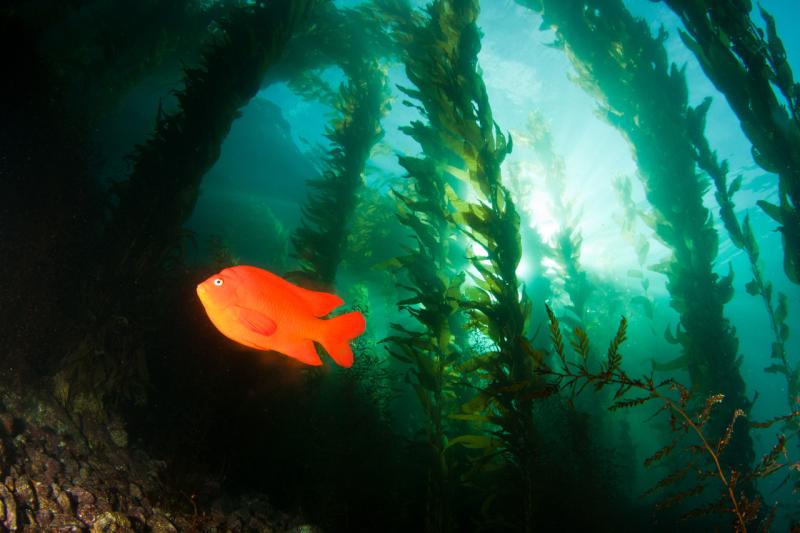NOAA and the National Fish and Wildlife Foundation are joining forces to restore habitat damaged from oil spills and hazardous waste releases in California. An initial cooperative agreement between the two organizations includes a recommendation of $1.5 million for restoration with potential for additional funding to support similar projects in other regions over the five-year time period.
The multi-year partnership will help NOAA make major progress toward restoring areas impacted from the S.S. Jacob Luckenbach and M/T Command oil spills, and the Montrose hazardous waste site. Priority activities include restoring 37 acres of kelp forest and planning for restoration of a rocky reef at the Montrose site, essential habitats supporting a diversity of fish and marine life that are important components of commercial and recreational fisheries, and other recreational industries.

A crevice kelpfish explores a rocky reef similar to the habitat to be restored with this new partnership.
The funding is part of a 2017 announcement of grants available to partners to implement projects restoring habitats and coastlines damaged by oil and chemical spills using funds recovered from those responsible for environmental harm.
NOAA’s Damage Assessment, Remediation and Restoration Program, which works across multiple offices, helps to restore natural resources after disasters like Montrose, bringing the habitat back to its condition before the incident. Since 1991, we have recovered more than $10 billion from those responsible for environmental harm to implement habitat restoration across the country.
Partnerships like this are key components of successful restoration efforts. They provide NOAA and other natural resource trustees additional options for building restoration projects to quickly address natural resource injuries. In addition, partners bring different perspectives and innovations that contribute to trustees’ restoration goals.


